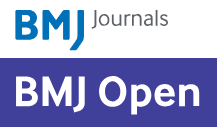Decomposing socioeconomic inequality in dental caries in Iran: cross-sectional results from the PERSIAN cohort study
Authors
Affiliations
Abstract
Background: The current study aimed to measure and decompose socioeconomic-related inequalities in DMFT (decayed, missing, and filled teeth) index among adults in Iran.
Methods: The study data were extracted from the adult component of Prospective Epidemiological Research Studies in IrAN (PERSIAN) from 17 centers in 14 different provinces of Iran. DMFT score was used as a measure of dental caries among adults in Iran. The concentration curve and relative concentration index (RC) was used to quantify and decompose socioeconomic-related inequalities in DMFT.
Results: A total of 128,813 adults aged 35 and older were included in the study. The mean (Standard Deviation [SD]) score of D, M, F and DMFT of the adults was 3.3 (4.6), 12.6 (10.5), 2.1 (3.4) and 18.0 (9.5), respectively. The findings suggested that DMFT was mainly concentrated among the socioeconomically disadvantaged adults (RC = – 0.064; 95% confidence interval [CI), – 0.066 to – 0.063). Socioeconomic status, being male, older age and being a widow or divorced were identified as the main factors contributing to the concentration of DMFT among the worse-off adults.
Conclusions: It is recommended to focus on the dental caries status of socioeconomically disadvantaged groups in order to reduce socioeconomic-related inequality in oral health among Iranian adults. Reducing socioeconomic-related inequalities in dental caries should be accompanied by appropriate health promotion policies that focus actions on the fundamental socioeconomic causes of dental disease.
Keywords: Concentration index; Decomposition; Dental caries; Iran; Socioeconomic status.

